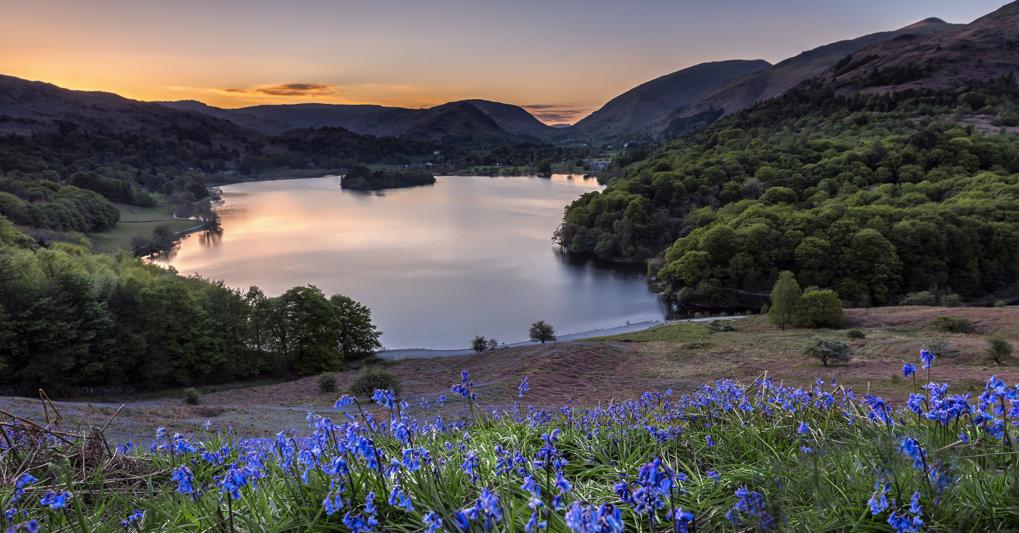Trails in the poetic lake area between nature, puzzles and houses
[ad_1]

Wild, awful, inhospitable. Good for the background of charming stories. This is how the lakes of the Lake District, in Cumbria, in the northwest of England, were seen before the industrial revolution, where country houses were “invented” and which today receive more than 15 million tourists annually. In 1847, it was the advent of the railroad that turned the Eighteen Lake District, a national park since 1951, into something desirable. Arriving from Manchester and equipped with umbrellas, the new bourgeois disembarked from the caravans in search of the first steamboats lying on the shores of Lake Windermere. Bounded by the extreme beauty of the place, not daring to contemplate the harsh landscape, they observed it from behind, with the aid of small mirrors, so that it seemed framed, and practically undramatic. Thus the natural tapestry of the deforested lakes, hewn in slate quarries (used for trellises in country houses), and bedecked with hydrangeas and rhododendrons, is cut in two: on one side, the lakes are animated by tea party afternoons (there was no boat that did not have a copper boiler always ready for use), and on the other hand, secluded valleys, sudden waterfalls, intact conifers, and pastures surrounded by dry stone walls.
On little Tarn Howes, northeast of Coniston Water, from London’s West End, arrived around 1880 the children’s book illustrator (and keen naturalist) Beatrix Potter, who had bought some land and established a sheep farm. Already planted with young spruces, pines, and red rowan, the lake was then owned by farms for about fifteen years. In 1893 Potter drew up the first draft of “The Tale of Peter Rabbit”. Years later, the book told of a naughty rabbit who ventured into a garden that was not his. Rejected by six publishers and therefore self-published, it sold 4,500 copies at 6p each, and became an international success. This story is well told in Bowness-on-Windermere The World of Beatrix Potter and in The Cottage on Hill Top in Near Sawrey, which the writer donated to the National Trust.
Windermere, the largest lake, is where the railway ended. The painter John Constable also got there: he made 70 watercolors and a few more sketches, but he was left in a bad mood, oppressed by the greatness of the mountains. In the small town of Ambleside on the same lake, romantic poet William Wordsworth kept a stamp shop, The Old Stamp House, which now houses a Michelin-starred restaurant. Dove Cottage, in Town End, between Ambleside and Grasmere, with newspaper clippings of the time and a collection of manuscripts on English Romanticism, is where he lived between 1799 and 1808. Today, bicycles and boats can be hired on the loch at the oars you take to Belle Isle Island. and browse the Steamboat Museum, which preserves the oldest steamboat in the world.
Less populated lakes are Wast Water, the Loweswater group, Crummock Water and Buttermere in the northwest, which are accessed via the Wrynose and Hardnott Passes. Wastewater is perhaps the only pool remaining in eerie fashion, the mountain tumbling into leaden water, among rare tufts of fern. From Derwent Water instead one of the most beautiful journeys begins, Watendlath, from the ancient north ‘the place where the water ends’: a valley with a small lake embroidered with a thread of dynasty, where horses graze. From the lochs, it’s also worth the Irish Sea coast, which connects Whitehaven to Millom, with its sandstone cliffs of St Bees populated by colonies of seabirds, Sellycroft beach ideal for riding and the sand dunes of Dregg, protected as a nature reserve.
By night, B&b 1692 Wasdale, a tastefully restored old barn in the West End, or Cedar Manor, a Victorian residence with gardens on Lake Windermere, await you. The selection of cottages, inns, houseboats, and farms converted into guesthouses suggested by publisher Sawday is also meticulous. A nice traditional pub, with rooms and a garden, is the Pheasant Inn in Cockermouth. Unusual are Bassenthwaite Lake Station and the Carriage Café, which serves Sunday brunch in replica carriages of the Orient Express. Fine dining is the hallmark of the Lake View Restaurant at the Armathwaite Hall Hotel, on Bassenthwaite Lake. A perfect souvenir is gingerbread cookies from the Gingerbread Shop in Grasmere: the recipe dates back to 1854, when Mrs. Sarah Nelson created these alphabet-shaped sweets to delight tourists who were also moved by nature’s wild beauty.
[ad_2]
Source link







